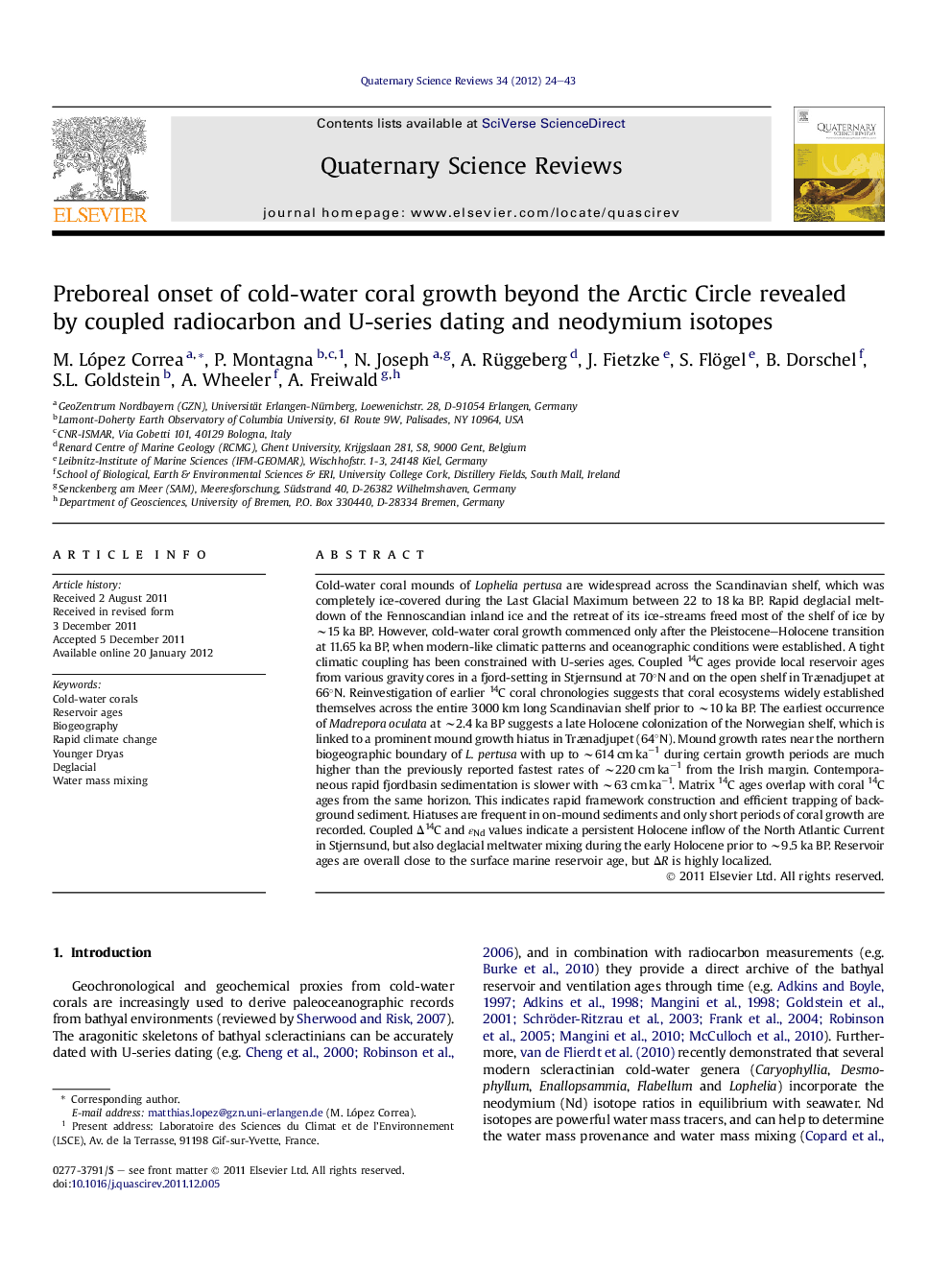| Article ID | Journal | Published Year | Pages | File Type |
|---|---|---|---|---|
| 4735788 | Quaternary Science Reviews | 2012 | 20 Pages |
Cold-water coral mounds of Lophelia pertusa are widespread across the Scandinavian shelf, which was completely ice-covered during the Last Glacial Maximum between 22 to 18 ka BP. Rapid deglacial meltdown of the Fennoscandian inland ice and the retreat of its ice-streams freed most of the shelf of ice by ∼15 ka BP. However, cold-water coral growth commenced only after the Pleistocene–Holocene transition at 11.65 ka BP, when modern-like climatic patterns and oceanographic conditions were established. A tight climatic coupling has been constrained with U-series ages. Coupled 14C ages provide local reservoir ages from various gravity cores in a fjord-setting in Stjernsund at 70°N and on the open shelf in Trænadjupet at 66°N. Reinvestigation of earlier 14C coral chronologies suggests that coral ecosystems widely established themselves across the entire 3000 km long Scandinavian shelf prior to ∼10 ka BP. The earliest occurrence of Madrepora oculata at ∼2.4 ka BP suggests a late Holocene colonization of the Norwegian shelf, which is linked to a prominent mound growth hiatus in Trænadjupet (64°N). Mound growth rates near the northern biogeographic boundary of L. pertusa with up to ∼614 cm ka−1 during certain growth periods are much higher than the previously reported fastest rates of ∼220 cm ka−1 from the Irish margin. Contemporaneous rapid fjordbasin sedimentation is slower with ∼63 cm ka−1. Matrix 14C ages overlap with coral 14C ages from the same horizon. This indicates rapid framework construction and efficient trapping of background sediment. Hiatuses are frequent in on-mound sediments and only short periods of coral growth are recorded. Coupled Δ14C and εNd values indicate a persistent Holocene inflow of the North Atlantic Current in Stjernsund, but also deglacial meltwater mixing during the early Holocene prior to ∼9.5 ka BP. Reservoir ages are overall close to the surface marine reservoir age, but ΔR is highly localized.
► Preboreal Lophelia growth onset ∼11 ka BP at northern biogeographic limit at 70°N. ► U-series and 14C-ages with Nd-isotopes witness meltwater discharge until 9.5 ka BP. ► Early Holocene 14C-ages in fjords can be strongly biased towards atmospheric Δ14C. ► Coral colonization in Stjernsund on Younger Dryas moraine rapidly after ice-retreat. ► Fast coral mound accretion of >200 cm ka−1 and up to ∼614 cm ka−1; frequent hiatuses.
